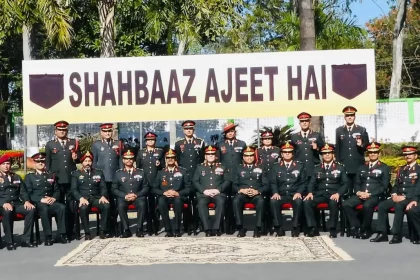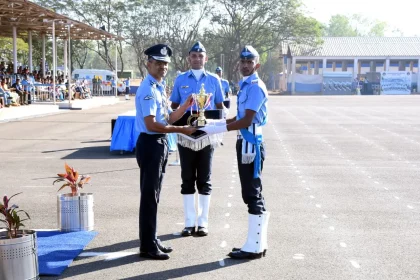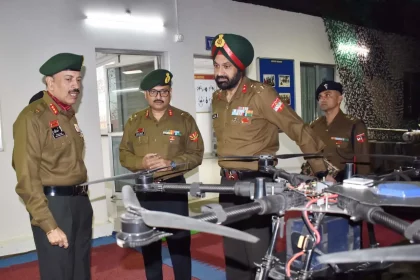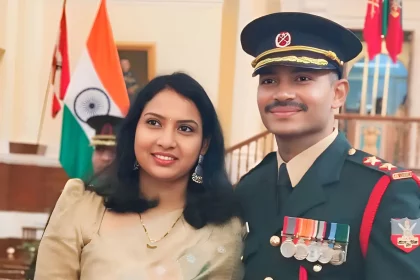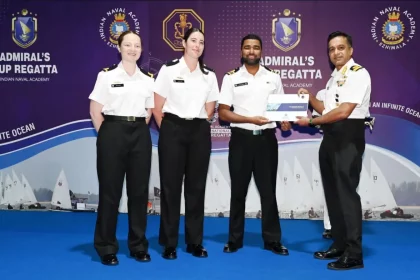Lt Gen Arvind Chauhan Reviews Training and Infrastructure at Shahbaaz Division
Corps Commander Commends Combat Effectiveness, Innovative Training and Technological Integration.
149 Agniveervayu Non-Combatants Pass Out from Airmen Training School, Belagavi
5th Batch Completes 24 Weeks of Rigorous Training, Strengthening IAF’s Future-Ready Support Workforce.
Lt Gen Rajiv Kumar Sahni Visits Brahmastra Corps, Commends Technical Excellence and Indigenous Innovation
DG EME Praises Mission-Ready Maintenance Support and Drone Innovation Driving Self-Reliance in Eastern Theatre.
Rejected, Tested, Never Broken: Soldier Commissioned as Officer After 20 Years in Uniform
Marching out of the hallowed portals of IMA as a commissioned Lieutenant, Lt SDV Prasad Reddy’s journey sends a powerful…
New Zealand Sailors Shine at 14th Admiral’s Cup Regatta Hosted by Indian Naval Academy
Midshipman Andrea Hawke Wins Silver as RNZN Stands Out at Record-Breaking International Sailing Event.
Who Is CISF Constable Monika Roy?: From a Small Village in West Bengal to Batch Topper at RTC Barwaha
From Rural Fields to CISF Topper: A Story of Grit, Discipline and Women Empowerment in Uniform.

